Writer and Web page info
- This web page: https://www.globalissues.org/article/796/east-africa-food-crisis.
- To print all info (e.g. expanded aspect notes, reveals various hyperlinks), use the print model:
On this web page:
Introduction
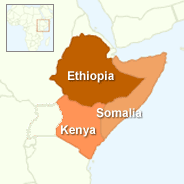 Into mid-2011, the world’s worst meals disaster is being felt in East Africa, in Ethiopia, Somalia and Kenya.
Into mid-2011, the world’s worst meals disaster is being felt in East Africa, in Ethiopia, Somalia and Kenya.
Regardless of successive failed rains, the disaster has been criticized as avoidable and man-made. It’s because the scenario had been predicted many months earlier than by a world early warning system. Each the worldwide neighborhood and governments within the area have been accused of doing little or no within the lead as much as this disaster. As well as, excessive meals costs have compelled meals out of the attain of many individuals, whereas battle in Somalia has exacerbated the scenario.
Because the worldwide group Oxfam describes: 12 million persons are in dire want of meals, clear water, and fundamental sanitation. Lack of life on an enormous scale is a really actual threat, and the disaster is ready to worsen over the approaching months, significantly for pastoralist communities.
Early warning programs had predicted this months earlier
As Inter Press Service (IPS) reported, regardless of the conflicts within the area,
The world had a chance to avoid wasting 1000’s of lives which might be being misplaced in components of Somalia as a result of famine, if solely the donor neighborhood had paid consideration to the early warning programs that predicted it eight months in the past.
…
There was a catastrophic breakdown of the world’s collective duty to behave. 3,500 individuals a day are fleeing Somalia and arriving in components of Ethiopia and Kenya which might be struggling one of many driest years in six a long time. Meals, water and emergency help are desperately wanted. By the point the U.N. calls it a famine it’s already a sign of huge scale lack of life,Oxfam stated.
Understanding about these items prematurely is important by way of lives, prices and preparedness. The US authorities company USAID’s Famine Early Warning System Community had predicted the disaster in November 2010, noting that
meals safety outcomes are prone to worsen, significantly among the many poorest households whose coping capability is probably the most restricted.
In areas at‐threat of worsening meals safety, households might require livelihood help to stop asset loss, family meals deficits, and adverse coping. Potential interventions in pastoral areas embody rehabilitation of water factors (boreholes), elevated veterinary providers concentrating on the dry season grazing areas, business off‐take packages, and vitamin help packages concentrating on poorer households. Within the cropping southwest marginal areas of Kenya, and in Rwanda and Burundi, the size‐up of useful resource switch packages could also be required to attenuate the meals safety impacts of the La Niña occasion [that was observed at the end of 2010].
Huge funding shortfall — assuming anybody cares
As worldwide humanitarian and improvement group Oxfam defined, many (typically easy) preventative actions may have been taken, assuming funds have been obtainable earlier:
Every time there’s an indicator of such a catastrophe, we should not solely sit and await the emergency response. We will conveniently make investments the funds by placing irrigation programs in place, vaccinating individuals, particularly youngsters, towards anticipated illnesses, and creating correct infrastructure for use in case there’s want for meals provide,stated [Anna Ridout, Oxfam’s spokesperson]
However, as Oxfam notes in one other article, donors and governments fail to ship on East Africa help effort:
The general humanitarian necessities for the area this 12 months, in line with the UN appeals, are $1.87 billion. These are thus far 45 % funded, leaving a spot of over $1 billion nonetheless remaining: gaps of $332m and $296m for the Kenya and Somalia UN appeals respectively, and $398m for the government-run enchantment in Ethiopia
Within the final two weeks there have been new pledges of $205m, leaving a spot of $800m nonetheless remaining.
The UK has pledged an estimated $145m up to now two weeks – virtually 15 % of what’s wanted. The EU has pledged round $8m thus far, with extra anticipated within the coming days. Spain has pledged almost $10m, Germany round $8.5m. France has thus far not pledged any new cash, and Denmark and Italy have stated no important new sums can be found.
However it isn’t simply the worldwide neighborhood. Numerous actors within the area additionally face criticism and query. For instance, because the above IPS article had additionally famous, the results of the drought have been made worse by the Al Shabaab militia group in Somalia, which had blocked donor companies from working inside its territories in 2009 — now the famine zones. Admittedly, the extremist group just lately lifted its ban, as IPS additionally famous.
One other instance is the governments of the affected nations in addition to the African Union. Ugandan journalist, Rosebell Kagumire, writing for Oxfam, famous that the African Union had complained about lack of funds as a result of governments haven’t put sufficient cash in. Though Kenya opened its borders for an inflow of Somalian refugees, Kagumire criticized the response as missing urgency and never being efficient.
One of many worst crises in current historical past
The disaster is among the worst in current historical past:
In comparison with earlier famines, the present scenario in Somalia compares or exceeds these reported throughout current years in Niger (2005), Ethiopia (2001), Sudan (1998) and Somalia (1992). Nevertheless, that is probably the most extreme meals safety disaster in Africa for the reason that 1991/92 Somalia famine, in line with the U.N. Between January and June this 12 months, 300,000 individuals in Mogadishu got meals help by humanitarian companies on a month-to-month foundation. Roughly 100,000 malnourished youngsters have been handled by some 418 vitamin centres in south Somalia from January to Might 2011.
…
The present disaster in Somalia is predicted to have an more and more devastating impact on different nations within the area. Nevertheless, typically, the Horn of Africa has 11.5 million individuals in disaster, together with the three.7 million in Somalia.
Considerably predictably, media protection appears spotty. At instances there are detailed reviews, typically responding to authorities and different giant worldwide company pushes to deal with the crises. Different instances, the protection vanishes from mainstream headlines and prime time viewing virtually as quickly as reporting has began.
On the morning of Sunday, July 31, throughout a evaluate of British Sunday newspapers by the BBC, commentators famous how just one paper had a entrance web page story about this disaster whereas virtually all of them had one thing a few second Royal wedding ceremony. (It wasn’t essentially ignoring Africa, both, because the additionally vital story in regards to the US debt disaster additionally barely featured on any papers headlines!)
And naturally, a lot of the reporting has adopted after the disaster has occurred.
It’s also fascinating to notice how shortly the worldwide neighborhood
mobilized towards Libya with army and different actions, when far much less individuals (in quantity) have been affected.
Extra info
For extra in regards to the points from different organizations, listed below are some beginning factors:
Information tales from IPS
Beneath is a listing of tales from Inter Press Service as they cowl this occasion. Revisit this web page continuously to see newer tales because the disaster unfolds:
-
COP28 Hits: Key Wins as Africa-Targeted Pledges, Offers Introduced
– Inter Press Service
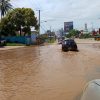
DUBAI, Dec 08 (IPS) – A record-breaking drought is unfolding within the Horn of Africa, the place thousands and thousands of persons are trapped on this planet’s worst acute meals insecurity emergency. Meals insecurity and malnutrition in West and Central Africa are on observe to achieve a 10-year excessive as coastal nations edge even nearer to the debilitating results of local weather change.
-
Unprecedented drought emergency calls for pressing motion
– UN Information
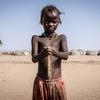
A brand new report by the UN staff combatting desertification reveals alarming developments over the previous two years which have resulted in an unprecedented emergency attributable to human-induced droughts.
-
Displaced households uprooted by extreme floods throughout Horn of Africa
– UN Information

Extreme floods within the Horn of Africa have affected tens of 1000’s of displaced households in Ethiopia, Kenya and Somalia, placing lives and livelihoods in danger, the UN refugee company, UNHCR, stated on Friday.
-
Ladies maintain the Key to Success of Pastoralism in Africa
– Inter Press Service
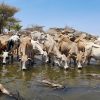
NAIROBI, Oct 17 (IPS) – Ladies in pastoralist areas of East Africa are crucial to the well being of livestock of their communities, holding the important thing to efficient animal vaccination campaigns meant to guard herds towards lethal illnesses.
-
At UN, Horn of Africa nations urge world solidarity and actual reform
– UN Information

As UN Common Meeting’s common debate continued Saturday, Horn of Africa nations made a powerful plea for motion to rescue a world teetering on the precipice of local weather disaster and struggling underneath the load of an outdated and unfair world monetary system.
-
Africa Local weather Summit: a Crucial Alternative for Collective Motion on Local weather Change
– Inter Press Service
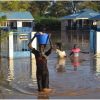
NAIROBI, Sep 01 (IPS) – As an African, I’ve seen first-hand the devastating results of local weather change. I’ve met communities displaced by floods in Malawi, Mozambique and Zimbabwe. I’ve spoken to farmers from Northern Kenya who’ve misplaced their crops to drought. These experiences have made me conscious about how pressing it’s to deal with the local weather disaster.
-
Bridging troubled waters amid deluge, drought within the US
– UN Information

A worldwide method to deal with the continuing water disaster is required as susceptible communities in the US face historic deluge and drought – points very a lot within the highlight on the forthcoming UN-supported World Water Week.
-
Drought-Displaced Afghan Peasants Yearn for Their Rural Life
– Inter Press Service

Jul 17 (IPS) – The writer is an Afghanistan-based feminine journalist, skilled with Finnish help earlier than the Taliban take-over. Her id is withheld for safety causes.Baba Jan, 60, a farmer in Badghis Province in Afghanistan has been compelled to go away his house, not due to the warfare however as a result of worst drought he has ever skilled. It’s the second time this 12 months he has been compelled to go away his cherished house and life within the rural space for capital metropolis, Kabul.
-
East African Worldwide College students to Profit from Single Qualification Framework
– Inter Press Service

NAIROBI, Jul 11 (IPS) – East African worldwide college students may quickly simply research in neighbouring nations after the Intergovernmental Authority on Improvement (IGAD) proposed a brand new qualification framework to mitigate the difficulties confronted when in search of training throughout borders.
-
Gray Market Charcoal East Africa Why Prohibitionist Interventions Are Failing
– Inter Press Service
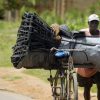
KAMPALA, Jul 10 (IPS) – At Kampala’s Nakawa market, Lovisa Nabisubi scoops charcoal from a bag and packs it into tins prepared for purchasers. Her naked palms, toes, and garments are stained black from hours of dealing on this in style family gasoline which some equate to “black gold” not simply in Uganda however in most of East Africa.
-
Horn of Africa: Round 60 million in pressing humanitarian want
– UN Information

Local weather, armed battle, excessive meals costs and post-COVID-19 financial fall-out have precipitated document meals insecurity within the Horn of Africa, with an estimated 60 million urgently in want of assist, UN humanitarian companies warned on Monday.
-
Ladies undergo disproportionately from ravages of drought, desertification
– UN Information

Ladies’s land rights are within the highlight forward of the World Day to Fight Desertification and Droughtnoticed on 17 June, at occasions world wide, from Kenya to Viet Nam, together with a high-level occasion at UN Headquarters in New York on Friday.
-
UN and companions search $7 billion to stop disaster within the Horn of Africa
– UN Information

With “disaster atop of disaster” threatening thousands and thousands within the Horn of Africa, the worldwide neighborhood can not afford to face idly by, Secretary-Common António Guterres stated at a pledging occasion to boost $7 billion for the area, held at UN Headquarters in New York on Wednesday.
-
Horn of Africa: Over 7 million youngsters underneath the age of 5 stay malnourished
– UN Information

Youngsters within the Horn of Africa reside by an unprecedented large-scale disaster of starvation, displacement, water shortage, and insecurity, the UN Youngsters’s Fund (UNICEF) stated on Monday.
-
Horn of Africa starvation emergency: ‘129,000 wanting loss of life within the eyes’
– UN Information
-
Refugee company appeals for $137 million to assist displaced in Horn of Africa
– UN Information

Lifesaving help is required urgently to assist thousands and thousands of individuals enduring one of many longest and most extreme droughts on document within the Horn of Africa, the UN refugee company, UNHCRstated on Tuesday, because the area enters its sixth consecutive wet season with no rain.
-
Horn of Africa: $84 million enchantment to help migrants alongside dangerous path to Yemen
– UN Information

The Worldwide Group for Migration (IOM) and companions are in search of $84 million to offer humanitarian and improvement help to over a million migrants within the Horn of Africa and communities internet hosting them.
-
In drought-stricken Cabo Verde, UN chief finds hope for creating sustainable oasis
– UN Information

The Secretary-Common spent Sunday travelling by the varied and assorted landscapes of Santo Antão, the place, after 5 years of intense drought, a number of improvement tasks supported by the United Nations are serving to to remodel the agricultural sector of this westernmost island of Cabo Verde.
-
Kenya: Extreme drought fuels malnutrition, reduces hospital-delivery births in Turkana County
– UN Information

Following 4 successive failed wet seasons, Kenya is amid the worst drought in 40 years, the UN’s ladies’s well being company, UNFPA, stated on Tuesday, shining a light-weight on 134,000 pregnant or breastfeeding ladies who’re reported to be acutely malnourished and in want of therapy.
-
Conflict, Famine, Illness, Disasters – 2022 – a 12 months Looking at Apocalypse
– Inter Press Service

TORONTO, Canada, Dec 23 (IPS) – A 12 months that began with Russia’s invasion of Ukraine and is ending with famine in Africa, whereas nonetheless spreading loss of life and distress by an everlasting pandemic and a deteriorating local weather disaster — 2022 has been an apocalyptic warning of the frailty of our planet and the woeful shortcomings of humankind.
-
Horn of Africa faces most extreme drought in additional than two generations – UNICEF
– UN Information

The variety of youngsters affected by dire drought circumstances throughout Ethiopia, Kenya and Somalia has greater than doubled in 5 months, the UN Youngsters’s Fund (UNICEF) stated on Thursday.
-
Somalia: Pressing help wanted for rural communities dealing with famine
– UN Information

Famine is quick approaching in Somalia and greater than 700,000 individuals may face hunger subsequent 12 months, the Meals and Agriculture Group (FAO) warned on Tuesday, citing the newest Built-in Meals Safety Section (IPC) evaluation.
-
Somalia: Famine narrowly averted – thus far, warn UN humanitarians
– UN Information

In Somalia, a full-blown famine has been narrowly averted for now, however the starvation emergency has not gone away, UN humanitarians stated on Tuesday.
-
No time to waste, as Haiti famine threat rises, warns UN emergency meals help company
– UN Information

With armed gangs answerable for key transport routes in Haiti, the nation may see famine circumstances, except a strong humanitarian help plan is put in place, the top of the World Meals Programme (WFP) in Haiti, Jean-Martin Bauer, has warned.
-
Drought, battle pressure 80,000 Somalis to shelter in Kenya’s Dadaab refugee camps
– UN Information

Tens of 1000’s of individuals have sought shelter in current weeks at Kenya’s Dadaab camps, compelled from their properties by extremist violence in neighbouring Somalia and an “unrelenting” drought, the UN refugee company, UNHCR, stated on Tuesday.
-
‘We can not surrender’ on the thousands and thousands struggling in drought-stricken Horn of Africa, urges WFP official
– UN Information

Thousands and thousands of individuals within the Horn of Africa – a area on the intersection of a few of the worst impacts of local weather change, recurring humanitarian crises and insecurity – are dealing with the driest circumstances in 4 a long time together with excessive meals shortages. The highest UN World Meals Programme (WFP) official within the area, Michael Dunford, is warning that the scenario there’s prone to worsen earlier than it improves.
-
Pan-African Strategy to Sort out Meals Insecurity Arising from Battle and Local weather Shocks
– Inter Press Service

Nairobi, Nov 22 (IPS) – Upheaval on the worldwide stage, the warfare in Ukraine, battle within the Horn of Africa, extreme climatic shocks, excessive worldwide inflation, rising world commodity costs, excessive costs of agricultural inputs and low intra-continental commerce are fuelling meals insecurity throughout Africa.
-
Horn of Africa: UNFPA launches $113 million enchantment for drought-impacted ladies and women
– UN Information

The unprecedented drought within the Horn of Africa is affecting entire communities, however it’s ladies and women who’re paying “an unacceptably excessive value”, the UN Inhabitants Fund (UNFPA) stated on Wednesday, launching a $113.7 million enchantment to fulfill their wants.
-
Humanitarians name for better help to stop famine in Horn of Africa
– UN Information

Larger world solidarity is required to deal with the quickly unfolding humanitarian disaster within the Horn of Africa, the place thousands and thousands are going hungry attributable to two years of unprecedented drought, UN companies and companions stated in a press release on Monday.
-
Tackling Recurring Starvation Crises on the Horn of Africa – Starting with Somalia
– Inter Press Service

URBANA, Illinois, USA, Nov 02 (IPS) – The statistics are stark. The disaster is unprecedented. But once more, in accordance to the United Nations, famine looms in Somalia, with a whole lot of 1000’s already dealing with hunger. As well as, droughts, and catastrophic starvation ranges have left over 500,000 youngsters malnourished and prone to dying. That is already almost 200,000 greater than the 2011 famine. Pressing instant actions should be taken now, each to deal with the disaster within the short-term and long-term.
Writer and Web page Data
- Created:

